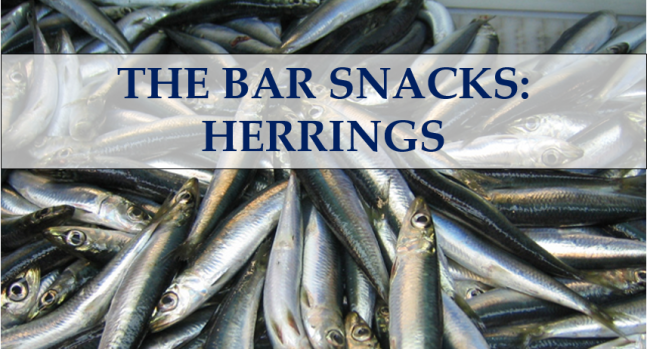
I know, I know. We started imagining what would go into Nashe’s shopping basket, but I think we can safely assume that he wouldn’t be having his 450th birthday party at his place. Thomas Middleton certainly doesn’t think Nashe would have lived in salubrious surroundings. In The Blacke Booke (1604) Nashe’s persona Pierce Penilesse is renting a room in a brothel. The visitor
“stumbled up two payre of stayres in the darke, but at last caught in mine eyes the sullen blaze of a melancholy lampe, that burnt very tragically uppon the narrow Deske o a halfe Bedstead, which descryed all the pittifull Ruines throughout the whole chamber, the bare privities of the stone-walls were hid with two pieces of painted Cloth; but so ragged and tottred, that one might haue seene all neuerthelesse…The Testerne or the shadow over the bed was made of foure Elles of Cobwebs, and a number of small Spinners Ropes hung downe for Curtaines… in this unfortunate Tyring-house lay poore Pierce uppon a Pillow stuffed with horse meat, the sheets smudged so dirtily, as if they had been stolen by night out of Saint Pulcher’s churchyard when the sexton had left a grave open.” (sigs. D1r-v)
A party at Nashe’s would probably be as much fun as, well, this:
Pub, anyone?
Nashe writes regularly about the discrepancy between the haves and have-nots, and uses the availability of food to illustrate this. In Pierce Penilesse (1592) he describes going “to Paules to seeke my dinner with Duke Humfrey” (sig. A3v), a euphemism for going without dinner by spending your meal times walking around St Paul’s Cathedral instead. He admits to having been in debtors’ prison and to having to survive on “spare commodities of wine and capons in my daies” ( Strange Newes, 1592, sig. I1r) which seems to mean that he has had to resort to living on left-overs from his patrons’ tables.
Nashe describes a pattern of fasting and feasting for those strapped for cash but trying to make an impression on their wealthier friends:
“Is it not a pitiful thing that a fellow that eates not a good meales meat in a weeke, but beggereth his belly…and nowe and then…comes to the eighteene pence Ordenary, because hee would bee seen amongst Cavaliers and brave courtiers, living otherwise all the yeere long with salt Butter and Holland cheese in his chamber?” (Pierce Penilesse, sig. B2v)
So our Nashe has been going without food or living off bread and cheese for a while now, in order to have a proper dinner of capons (if it is his patrons taking him out for dinner, as Kirsty points out here, capon was a rich man’s food) or pickled herring if he’s heading out with his mates.

Nashe is probably going to meet his friends at one of the taverns in Candlewick Ward, an area where Flemish and Brabant weavers have settled, and to where more recent immigrants fleeing the continental wars of religion gravitated. It is around this area that John Taylor, the water poet, tells us that “there are foure Houses in London that doe sell Rhennish Wine, inhabited onely by Dutchmen namely: The Stilliyard, The Swan in Thames street, The Swan in Crooked lane, The Sun at Saint Mary Hill.” (Taylors travels and circular perambulation, 1636, sig. E3r). The Steelyard and the Swan on Thames Street are highlighted in blue and red on the map respectively, while Crooked Lane is highlighted in yellow. According to John Stow’s Survey of London (1598) the “most ancient house in this lane is called the Leaden porch…It is now called the Swan in Crooked lane, possessed of strangers, and selling of Rhenish wine.” (‘Candlewick Street Ward’, 1633 ed. p.236)
Taylor follows this list with an epigram which explains that not only are these the only pubs in London to sell rhenish wine, but that they also serve certain bar-snacks: “The Pickled Herring, and the Anchovea rare:/ And (if you please) Potargo, or Caveare.” (sig. E3r) Potargo is a dried salted mullet or tuna roe, which seems to have been enjoyed on a night out by Samuel Pepys, who describes “talking and singing, and drinking of great draughts of claret, and eating botargo and bread and butter till 12 at night, it being moonshine; and so to bed, very near fuddled.” (Diary if Samuel Pepys, 5th June 1661)
So we can imagine Nashe and co. getting severely ‘fuddled’, and matching their rhenish wine and ale with some fishy snacks. The specialty of the house would have been pickled herring, a way of preserving herring so linked to the ‘stranger’ community that the Flemish brewer Peter van Durant was known as ‘Pickelhering’ throughout London for his promotion of this dish. The name ‘Pickelherring’ would make yet another semantic journey back to the continent thanks to a troupe of English player who toured Europe and became known to their German fans as John Posset, Hans Stockfish (itself a Dutch term for salted fish: stock/stick+ vis/fish) and Pickelherring.

Although herring was a staple of the English diet, this way of preserving them was still seen as an exotic habit in the Elizabethan period. Samuel Rowlands jokes that it had become a London fashion to match a beer “with a Pickle-herring or two/ As Flemmings at Saint Katherines use to do.” (Samuel Rowlands, The Letting of Humours Blood, 1600, sig. F3r). Nashe tells us that he was present at ‘that fatall banquet of Rhenish wine and pickled hearing’ (Strange Newes, sig. E4v) after which the playwright Robert Greene is meant to have popped his clogs.
Speaking of clogs, there is a traditional way to eat pickled herring which my Flemish side feels compelled to share with you. Known as ‘maatjes’ in Dutch, these are young silvery herring which are essentially served raw and preserved in brine. You can click here for a recipe. To eat one properly (and I bet you the publicans in the Steelyard would have shown Nashe how to do this) you need to pick one up by the tail, raise it above your head, and bite into it.

As well as looking out for dive-bombing seagulls, Nashe may also have wanted to prepare himself for plenty of trips to ye olde lavatory. In this seemingly harmless herring-based still life, the slab at the back of the painting includes a poem in praise of the pickled herring by the poet preacher Jacob Westerbaen which explains that eating this delicacy “will make you apt to piss/ And ceaselessly fart.”

Pickling herring in this way would have meant that the fish would have retained their silvery colour, which would have been visually striking to Londoners because herring was usually preserved by smoking it, giving it a vivid golden red colour. ‘White’ or fresh herring may have been more widely available for those living by the seaside, but for the majority the ‘red’ herring was the norm. This smoking process is behind Nashe’s rhetorical inflation of the humble herring into royal ‘golden’ status in his final work, Nashes Lenten Stuffe (1599) a mock encomium in praise of the herring and the city of Great Yarmouth. There he describes it as “the puissant red herring, the golden Hesperides red herring, the Meonian red herring, the red herring of Red Herringes Hall” (sig. L2r).
Slight detour: Any party games at this Nashebash, I hear you ask? Well obviously they would have been playing this!

Today we are recommended to eat at least one oily fish per week to benefit from the omega 3 fatty acids of these fish (click here for some suggestions for getting more fish into your diet: you’re welcome) but it was exactly these fatty acids which made these fish notoriously difficult to preserve, so that you would likely find one that had gone rancid quickly, a point made at great length by Nashe in his description of the smelly herring which is ensainted by the Pope (for the full story, see Lenten Stuffe, pages 51-59).
To take away some of that stench, I’d recommend you return to the same spot tomorrow to read Rachel White’s post on one of Nashe’s favourite condiments: mustard.
Kate De Rycker
Further reading:
M.A. Katritzky, “A plague o’ these pickle herring”: from London drinkers to European stage clown’, Renaissance Shakespeare/Shakespeare Renaissances: Proceedings of the Ninth World Shakespeare Congress, eds. Martin Procházka, Andreas Höfele, Hanna Scolnicov, Michael Dobson (World Shakespeare Congress Proceedings, University of Delaware Press, 2014) 159–168.
Willem Schrickx, ‘”Pickleherring’ and English Actors in Germany’, Shakespeare Survey vol. 36, ed. Stanley Wells (Cambridge: Cambridge University Press, 1983) pp.135-48
